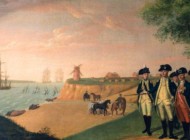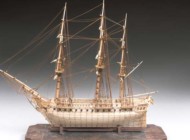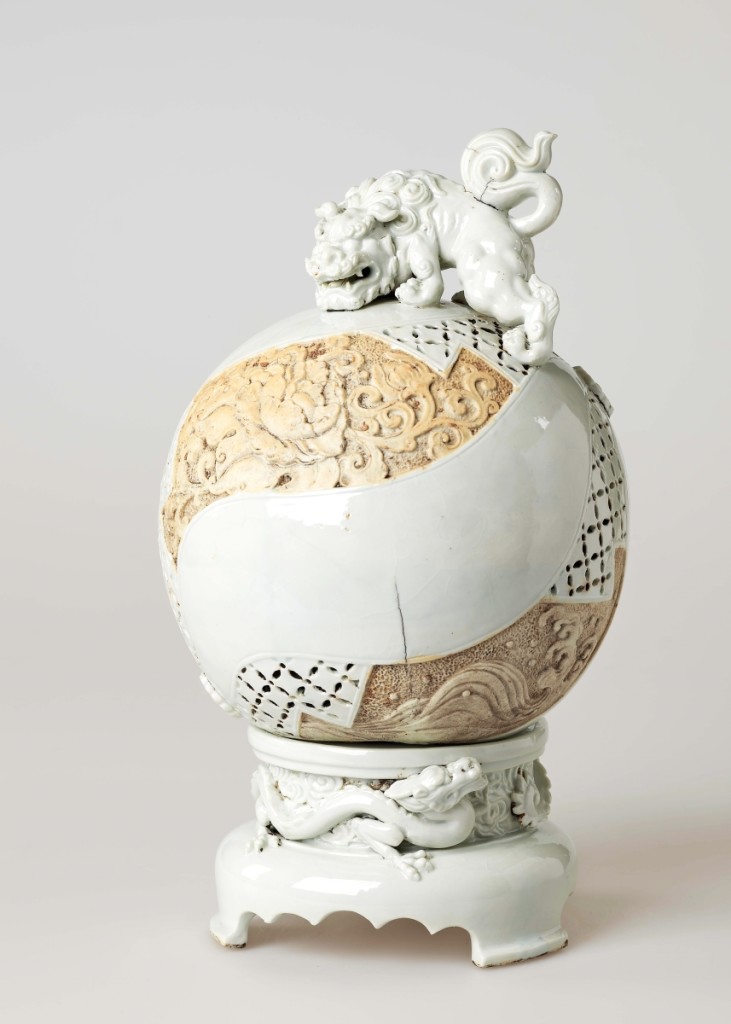
Censer, Japanese, later 1800s. Hirado Mikawachi ware porcelain with iron and glaze, 12-1/8 inches tall. Bequest of Martha B. Lisle.
By Karla Klein Albertson
PROVIDENCE, R.I. – While many exhibitions attempt a scholarly approach to beautiful containers, “Trading Earth: Ceramics, Commodities, and Commerce” at the Rhode Island School of Design (RISD) Museum of Art takes a hard look at the tea as well as the pot. Not just who brewed it and drank it but who picked it and transported it around the world. Trade routes were the worldwide web of ancient times, and when the words “supply chain problems” hit the news, it becomes apparent that the same fragile apparatus is at work today.
Commodity demand may be linked to basic necessities like grain or cloth, but often it is based on the far more potent motivator of desire. In the past, expeditions set out for spices and incense, chocolate and coffee. In the ancient world, frankincense and myrrh were equal in value to gold.
The remains of amphoras that once held wine and oil now mark the extent of the Roman Empire’s influence. The extensive use of enslaved labor made growing, processing and transporting these products possible. Today, demands for rare metals and computer chips and the desire for everything from diamonds to drugs create tragedies at both ends of the chain.
Since “Trading Earth” attempts – through ceramics – to address some of these deeper issues, it is valuable to read the mission statement in full:
“Global commodities that draw their life from the earth, such as tea, or physically form its composition, such as clay, can be directly consumed in their natural state or processed into finished products. They can be marketed locally or exported to distant markets via international trade routes. Whether staples or luxuries, commodities important to trade and commerce through the centuries have simultaneously necessitated, inspired and informed the production of ceramics associated with their consumption. The long-distance multidirectional transportation of ceramics resulted in the dissemination, reciprocity and appropriation of ceramic processes, technology, design and ornament.
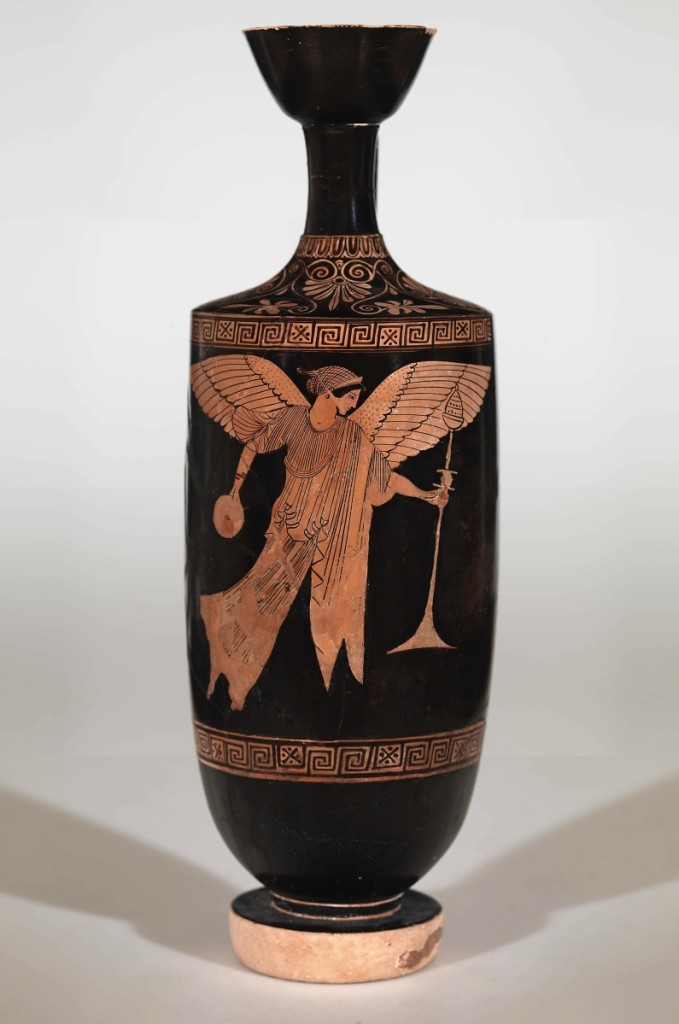
Oil flask (lekythos) by Pan Painter, Greek, active 480-460 BCE, circa 480 BCE. Red figure terracotta, 15¼ inches tall. Museum Appropriation and Special Gift Fund.
These commodities and goods are employed and enjoyed gastronomically, aesthetically, socially, artistically and culturally by many types of markets and consumers. They are also frequently cultivated, harvested, and produced by enslaved, indentured or exploitative labor of human beings, damaging or endangering the wellbeing of their person, communities and environments. Drawing from the museum’s nearly 8,900 ceramic objects, this exhibition centers the intersection of global trade and ceramics through the exploration of a dozen commodities.”
Curator Elizabeth Williams was the driving force behind the selection and presentation of over 200 objects drawn principally from the RISD Museum’s decorative arts, Ancient, Native American and Asian collections. In a conversation with Antiques and The Arts Weekly, she explained that the institution had sought out a new way of looking at their collections in the light of current social justice movements: “Those things are resonating very strongly at our museum, with the college, and with the students as well. Looking particularly at decorative arts objects – they are made of precious materials, they are owned by a certain class, a certain type of people. The focus is on who owned them, how they were used and what they served. And we wanted to look at the aspect of how those contents got to the table.”
She continued with that question everyone asks: “How did sugar become so popular? People think about the wonderful sweets – the candies and cakes which are part of our lives. But the other side of that is the number of people who were enslaved to do the backbreaking work of cultivating, harvesting and processing sugar cane. That literally increased the number of enslaved people because of the popularity of sugar just grew and grew.”
“And it’s still with us. So many of these commodities – sugar, alcohol, caffeine, tobacco – are all things we’re still warned against over-consuming today! This exhibition was shaped by the idea, how do we bring into this a fuller, broader, more comprehensive picture of these commodities, such as coffee, which we consume every day without really thinking about why? How did these things arrive on our tables – in our cups and in our bowls?”
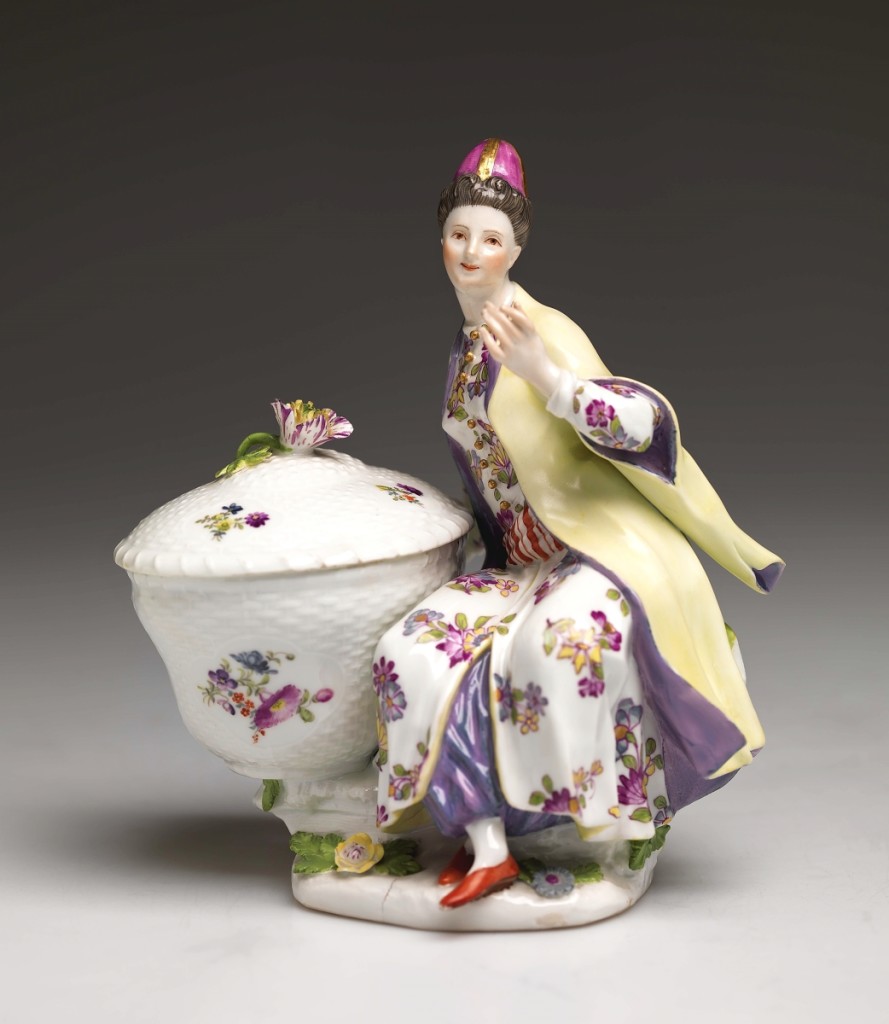
“Turkish woman with sugar basket” by Johann Joachim Kändler (German, 1706-1775), modeler, Meissen Porcelain Manufactory, Germany, 1710-present, circa 1745. Porcelain with enamels, glaze and gilding, 6-3/8 inches tall. Gift of Miss Lucy T. Aldrich.
To fulfill this purpose, the gallery – which normally displays Meissen figures – has been transformed. “I think we have about 8,000 ceramic wares and about 6,000 of those are in the decorative arts department,” Williams continued. “There are so many, and people are familiar with the ones typically on view. When you think about the fascinating objects that aren’t on display, we really wanted to get them out on view. It is a cross-departmental exhibition. I am the curator, but we have things coming from our Ancient, Asian and Native American art departments.”
In the process, the curator made some discoveries: “Some of the most fanciful and clever things that came up were the incense burners. There is one that is a ceramic porcelain globe with piercings – it is absolutely fantastic. I don’t know if it’s ever been on view. The juxtaposition of these objects within the case per commodity is going to be a departure.
“There will be things next to one another that are from very different time periods and cultures. You will be able to see the differences, but I also think that looking at it through the lens of the commodity, things will come together.” Among the commodities explored are tea, coffee, sugar, chocolate, spices, incense, tobacco and alcohol.
Among the exhibits are four examples from the extensive ceramics collection formed by Eliza Greene Metcalf Radeke (1854-1931), who was the president of the Rhode Island School of Design from 1913 to 1931. Her mother, Helen Adelia Rowe Metcalf (1830-1895) was a co-founder of RISD in 1877 and its first director. Radeke and her collection, many pieces from which were donated to the museum, deserves a future show and catalog of their own; she was a pioneer in the field of American folk art. But this time around, visitors will be able to see a colorful tin-glazed Moroccan pilgrim flask from the 1800s.
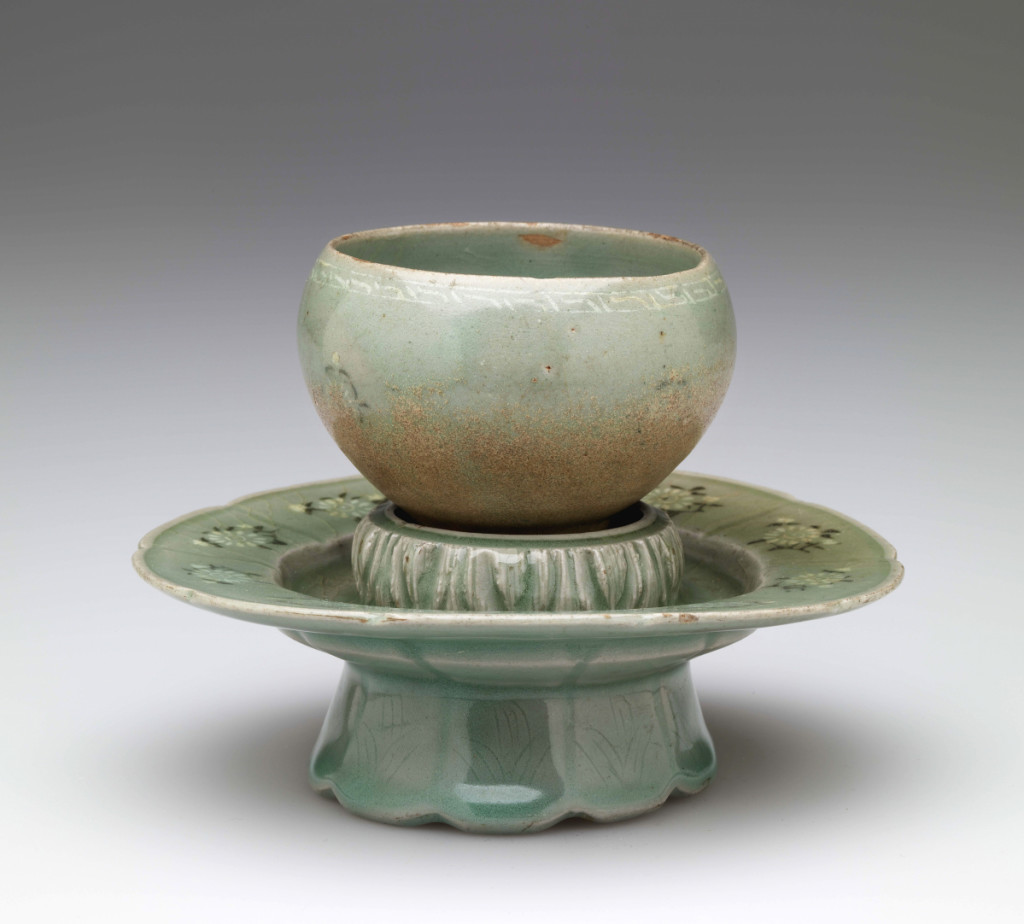
Wine cup on pedestal, Korean, 936-1392. Stoneware with glaze, 4-5/16 by 6 by 5-7/8 inches. Gift of Mrs Gustav Radeke.
Curator Williams outlined many ways in which showgoers can interact with the objects and the themes behind their assembly: “Hopefully, we’re doing this in a way that can be accessed on a number of levels. Coming into the gallery, you can look at the objects, you can look at the label copy. There will be ample information in the gallery, and then there’s going to be an easily accessed online component with even more information.”
“There you will be able to drill down for more information about specific objects, and that will also connect you to the audio component for this exhibition. This will probably be up for about two years; the ending date is January 28, 2024. The idea is, this is an exhibition you can walk in and take a look, then if you want to learn more, you can go online while in the gallery and really dive into particular things.”
Williams concluded, “This is also going to be a teaching exhibition for our K through 12 classes, for RISD students and other higher education students. You think about what a faculty member could come in and talk about. They could talk about trade in general, they could spend an hour talking about a single object. We’re hoping that this becomes a resource that people will use for a longer period of time and also one that helps us understand how people could use an exhibition like this. It’s unlike anything that’s been shown in that gallery. While presenting a normal museum exhibition, hopefully we are offering a really rich and deep resource for teaching at all levels.”
The Rhode Island School of Design Museum of Art is at 20 North Main Street For more information, 401-454-6500 or www.risdmuseum.org.



















